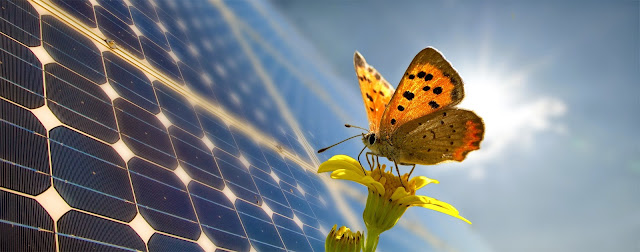Original Post: Gurjit Singh, Jakarta | Opinion
Among the various initiatives launched by the
government of Prime Minister Modi in India is the thrust on renewable energy
particularly solar energy.
The initiatives for Smart Cities, Skills
Development, Clean Ganga, Digital India and others are also linked to the
Renewable Energy Mission to be integrated since low carbon emission is part of
the plans for India’s further development.
In June it was decided to enhance renewable
generation to 175 GW, of which solar power generation will increase to 100 GW
in seven years. This would be about a third of India’s total power generation
capacity.
This target of 100 GW of solar energy is based
on the assessment that in several zones of the country sunshine is available
for about 260 days annually. There is no doubt this will require a massive
investment of Rs. 600,000 crores (US$90 billion) particularly since the current
production is about 4,000 MW.
What is interesting is that much of this
expansion is going to be off grid through stand-alone mechanisms with the solar
rooftop arrangements contributing nearly 40,000 MW.
As per targets established by the Ministry of
New and Renewable Energy, ground mounted installations, which can be grid
connected, will increase to 57,000 MW by 2022.
Rooftop solar installations are expected
to leap from 2,000 MW in 2015 to a production of 40,000 MW by 2022. Analysis by
the Solar Energy Cooperation of India and the Institute for Energy, Economy and
Finance believes that the seven-year program for rapid increase in installation
is feasible.
The Indian Railways, one of the largest
corporations, is also joining this effort and experimenting with solar powered
locomotives and stations by using large tracts of land that the Railways own.
They hope to alter the energy mix by shifting to solar energy in a big way.
The Delhi Metro is expected to go completely
solar and have surplus to provide to the central network in this period. Cochin
International Airport in Kerala has become the first airport in the world to be
entirely operating on solar power, an example to be followed by others.
 |
| SOLAR MODULE MANUFACTURING EQUIPMENT |
One of the major challenges in solar energy
generation is the use of land particularly to avoid use of arable or functional
land. In India the main focus has been on degraded land and rooftop
utilization.
Another important area is financing. The price
of solar powered generation equipment has fallen by 75 percent in the last
decade. Large scale plants today can bring solar generation to an affordable
price reducing the requirement of subsidies. In India investment schemes
encourage foreign companies to also invest in solar parks.
Of the 300 proposals for setting solar power
generation projects, there are several international companies who are likely
to meet about 20 percent of the proposed generation. Fiscal incentives
including issue of tax free bonds, which proved successful for other
infrastructure projects, are on the anvil.
Commercial banks have earmarked up to Rs. 15
crores ($2 million) for lend to this priority sector. Solar plants on top of
roofs can avail of the tax incentivized home loan system of commercial banks. A
recent bid for a 648 MW plant in Tamil Nadu anticipates an investment of $750
million at a bid rate of US 11 cent/kwh for 25 years
India is ready to share its experience and
initiative with Indonesia as both countries need energy initiatives particularly
renewable energy.
An interesting experiment has been started by
the Embassy of India which provided “scholarships” to eight rural women from
the regencies of Sikka and NTS in East Nusa Tenggara (NTT).
These rural women participated in a 6-month
program at the Barefoot College in Tilonia in India and returned as confident
solar engineers. They returned to their villages and were provided equipment
and support by the Wadah Foundation and its associates.
In early July I had the privilege of switching
on solar lights in the village of Pomat and Wolo Mude in Sikka and Kommunitas
Koa in NTS in the presence of the regents and other community leaders. These
women solar engineers have become community facilitators and enthused the
community to build their workshops which are funded by the Wadah Foundation.
They stock their equipment and spare parts as well as charging stations and
have installed solar panels on the rooftop of every participating household.
Each house there now has lights at night and
the workshop has become a community centre where people can meet at night and
hold classes, meetings etc. Portable solar lanterns are also provided and each
participant contributed Rp 30,000 ($2.1) to the workshop for providing
maintenance services. In most of these villages there was no electricity at all
and it was a moment of joy to the people of these villages.
In the fishing village of Wuring Lembah which
had electricity, solar lanterns have been provided to all the fishermen who
have replaced their expensive kerosene lanterns.
Earlier they used to spend Rp 60,000 for
kerosene lanterns but now they contribute Rp 30,000 each to the workshop for
maintenance. This project has shown the validity of solar power in remote
villages and has also served to empower women.
Now that this cooperation is in place, cooperation for large size power plants can be undertaken to tap solar energy and reduce both cost and application of fossil fuels.



No comments:
Post a Comment